-
Images: Temple at Tiruvaikavur – Bilvaranya
Images: Temple at Tiruvaikavur – Bilvaranya (the Birth-place of Sri Vidyateertha Swami, the 51st Peethadhipati of Sri Kanchi Kamakoti Peetha) near Kumbakonam. After reigning at the Kanchi Sri Kamakoti Peetha for 73 years, this Acharya went to Himalayas to perform tapas. After spending 15 years in tapas Sri Vidyatirtha Swami attained videha mukti there.
படங்கள்: கும்பகோணத்திற்கருகிலுள்ள ஸ்ரீகாஞ்சீ காமகோடி பீடம் 51வது ஆசார்யர் ஸ்ரீவித்யாதீர்த்த ஸ்வாமிகள் அவர்களின் ஜன்ம ஸ்தானமான வில்வாரண்யம் எனப்படும் திருவைகாவூரிலுள்ள கோயில். ஸ்ரீகாஞ்சீ காமகோடி பீடத்தின் ஜகத்குரு ஆசார்யாள் அவர்களாக 73 ஆண்டுகள் அருளாட்சி செய்த இந்த அருளாளர் ஹிமாலயம் சென்று 15ஆண்டுகள் தவம் செய்து நிறைவாக அங்கேயே விதேஹகைவல்யம் அடைந்தனர் என்பது வரலாறு.
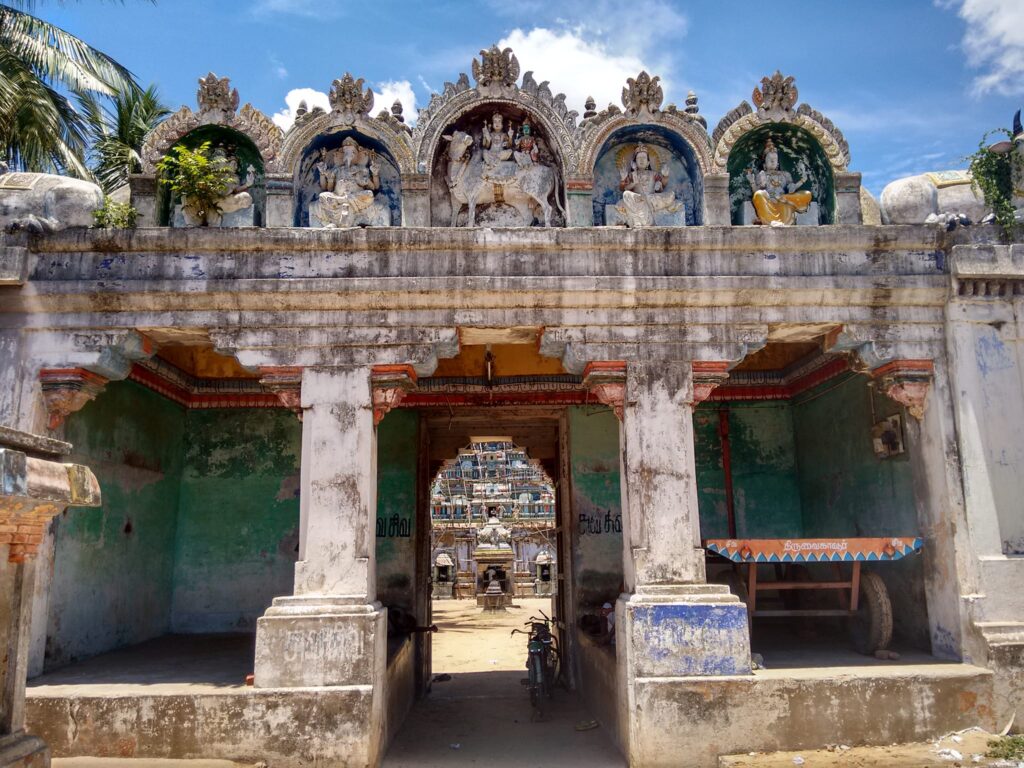
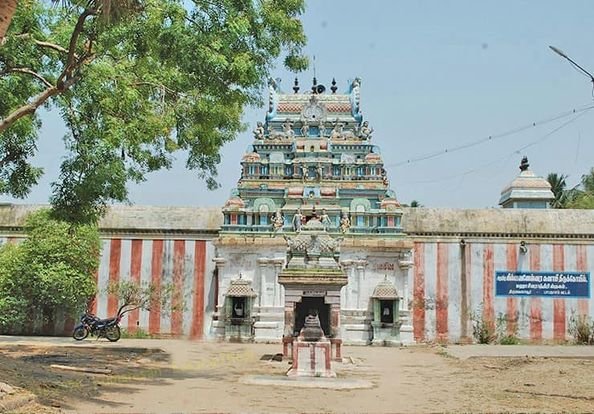

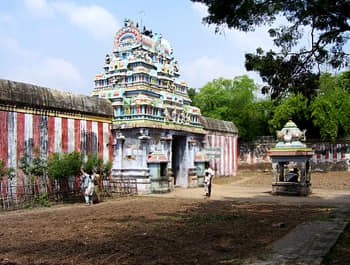
-
Inferable Link of Bhagavatpada Sankaracharya with Kumbhakonam – A.Kuppuswamy Iyer (2/3)
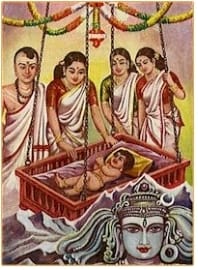
Migration of Tamilians to Kerala
It is believed that Parasurama after his surrender to Rama, prince of Ayodhya, came down to the South and was instrumental in colonising the Kerala region with Tamilians.
It seems quite probable that another migration of Tamilians to Kerala did take place in the middle of the first millenium before Christ. Even now there are some villages around Tiruchur and Kaladi with names similar to those of certain villages near Sivapuram. Some of these are:- Mathur, Sedinipuram, Chandrasekharapuram, Karukkudy (Marudanallur-called in Kerala ‘Karukkurry’.”). Names of places such as Alathur, Tiruvaloor ( Tiruvarur), Tiruvangad (Tiruvenkadu) are also found in the Chera country. There as is also a place called ‘Kandiyur’ in Kerala. Kandiyur is the name of a village about 20 miles west of Kumbhakonam.
It is evident that the very name ‘Kaladi’ given to Sankara’s birth place is a Tamil name. Perhaps the place got the name ‘Kaladi’ after the advent of Sankara. Sankara is also known by the epithet ‘Bhagavatpada’. ‘Pada’ signifies ‘foot’ and ‘Kaladi’ means ‘footstep’.
Ancient literary works like the ‘Sivarahasya’ indicate that Sankara was born in a village known as ‘Sasalagrama’.
Hence it can be concluded that ‘Kaladi’ is a Tamil name and a later name. Sivaguru, Sankara’s father was a native of Kaladi. Perhaps Sivaguru’s parents gave their only child the name ‘Sivaguru’ after the name of the Lord of Sivapuram (near Kumbhakonam) which might have been the ancestral home of their forebears.
That settlers in new lands generally named their new colonies after their original native places is borne out by history. Protestant emigrants to the coasts of North America from the time of Elizabeth Tudor till the time of George III, named their new settlements in America, after their original homes in England, with a prefix ‘New’ in certain cases. There is a city ‘York’ in England and one ‘New York’ in America, as also a ‘Plymouth’ in England and a ‘New Plymouth’ in America. In both England and America there are towns called Ports mouth, Halifax etc. And one can find names of certain villages with almost identical names in Tamilnadu and Andhra Pradesh.
Alwaye and Alavai
There is a river flowing near Kaladi called ‘Alwaye’ (called ‘Choorna’ or ‘Poorna’ in olden times). On her bank there is a town also ‘Alwaye’. There is a river flowing through the city of Madurai (in Tamil Nadu), known by the name ‘Vaikai’ (pro- bably a later nickname as per Tiruvilayadal Puranam), having its source very near that of the river Alwaye.
It may be mentioned that the city of Madurai is known in Tamil classics as ‘Tiru Alavay” (“Tiru’ being only a prefix denoting sacredness). And we have a Sanskrit name for Madurai in an almost similar sounding- word-“Halasya”.
Similarity of the name of a town in Kerala with the classical name of a town in Tamil Nadu provides another indication of the migration of Tamilians to Kerala.
-
Inferable Link of Bhagavatpada Sankaracharya with Kumbhakonam – A.Kuppuswamy Iyer (1/3)
Sage Vyasa reduced the essence of the Upanishads into aphorisms, known as Brahmasutras. Sankara Bhagavatpada was the first to produce a superb gloss on the Vyasa-sutras.
It is quite common knowledge that Sankara was born at Kaladi, in Kerala. All biographical sketches about Sankara state that his father, Sivaguru, performed penance at the sacred Tiruchivaperur (modern Tiruchur) for an offspring.
About two miles and a half to the south east of Kumbhakonam there is a village called ‘Tiru- chivapuram’. Puranas as also Tevaram hymns record Sivapuram as a sacred spot where Vishnu in the form of a white boar (Varaha) has worshipped Siva. Tirunavukkarasar”, Jnanasambandar¹ and Arunagiri- nathar have extolled the shrine at Sivapuram.
A small sculptural representation of Varaha (boar) worshipping a Siva Lingam is seen on the Sivapuram southern wall (outside) of the sanctum sanctorum of the Sivapuram temple.
The outer Gopuram (tower on gateway) of this temple seems to be pretty old. There is an old Champaka tree in the front part of the temple, in accordance with one of the below mentioned lines (2), about this shrine, in Tevaram.
A stone plaque on the left side of the main entrance gives the name of the temple as “The Temple of Sivagurunathar.” And the name of the presiding Sivalingam in the temple is ‘Sivagurunatha’ according to the Sthalapurana and ancient tradition.
It is notable that the name of ‘Sivagurunatha’ and its curtailed form ‘Sivaguru’, are quite common and widespread among saivites in and around Kumbakonam.
And it is to be remembered that Sankaracharya’s father too bore the name ‘Sivaguru’. But this name is not quite so common around Tiruchur or Kaladi as in the Kumbhakonam area of the Kaveri Delta region.
(To Be Continued)

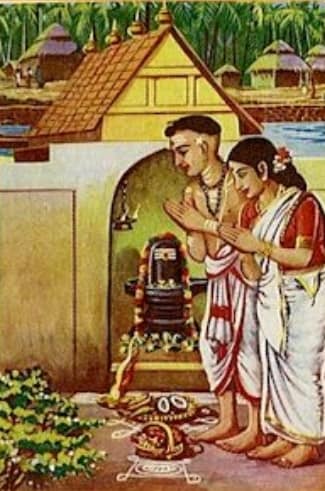
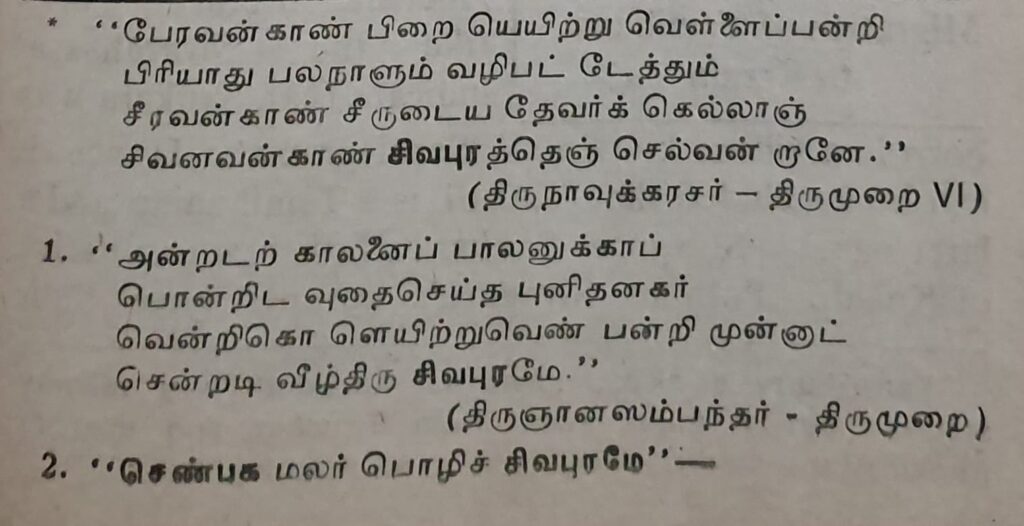
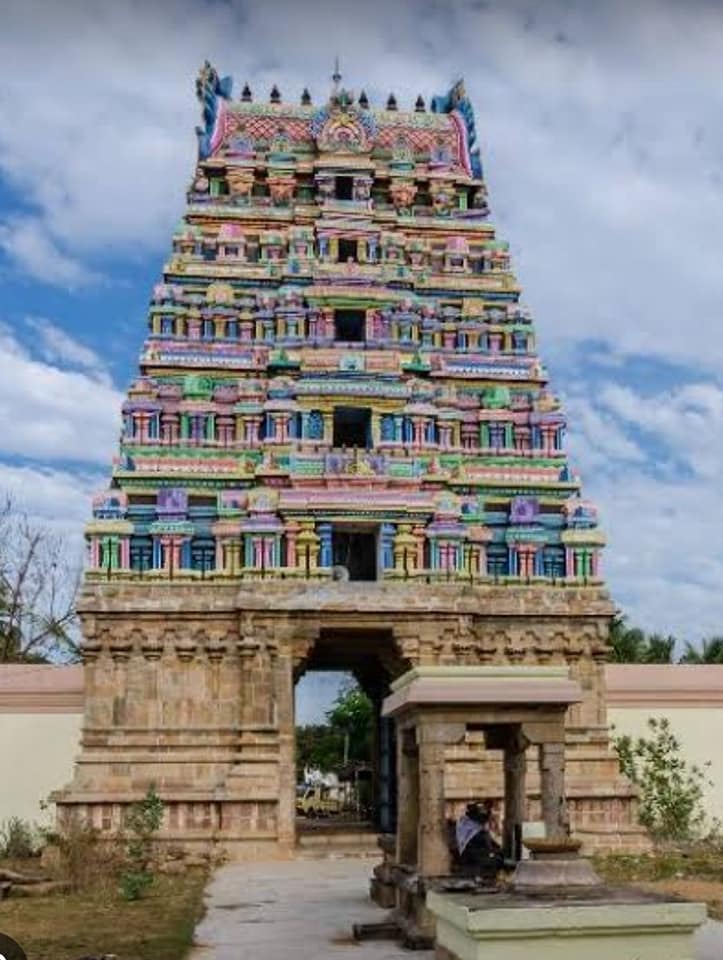
-
Sri Ramapati Misra, President of the Bombay branch of the Varnasrama Svarajya Sanga
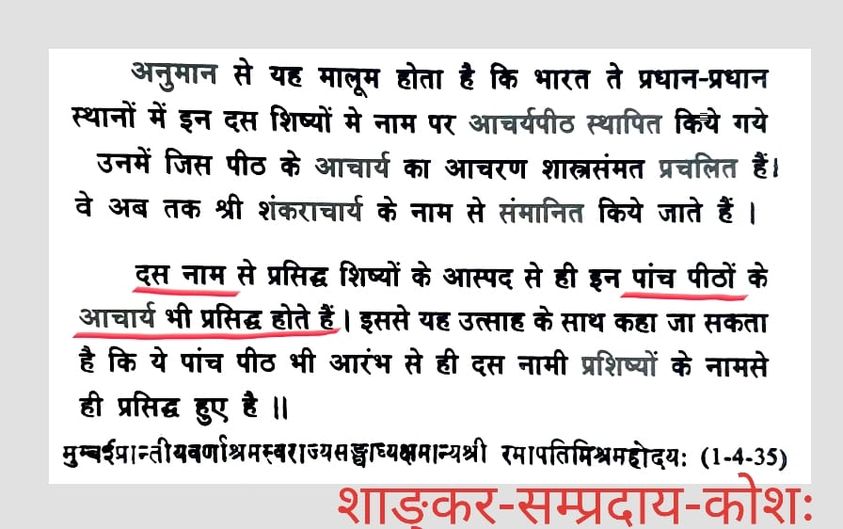
This passage is an extract of an article dtd. 01.4.1935, by Sri Ramapati Misra, President of the Bombay branch of the Varnasrama Svarajya Sanga, in Hindi.
In the second paragraph, the Author states that among the Sankaracharya Pithas with Dasnami Ascetics as their Heads, Five Pithas have been famous from the beginning.
(Sri Sankaracharya And Sankarite Institutions By Sri Anantanandendra Saraswati of Sri Upanishad Brahmendra Matha)
-
Madhaviya Sankara-digvijaya..3
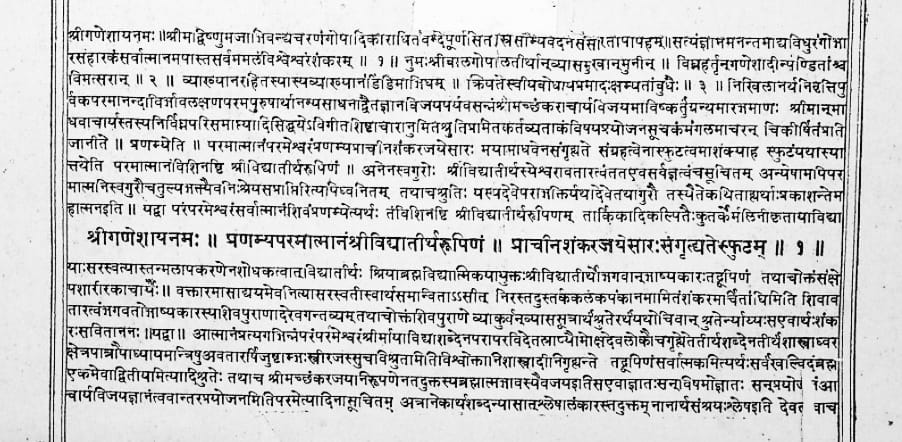
” I have come to the conclusion that the work is no independent composition of one single author but is merely a collection of stanzas from four or even more earlier works, added to some nucleus if any that may have once existed, the nature and extent of which can not be ascertained today. I feel that it is unworthy of a genius like Vidyaranya. My findings are:
Out of the Total number of about 1848 verses, comprising the 16 chapters of this work, I.e. Madhaviya, about 1100 stanzas are found to be common to 4 other works, as follows:
1. Vyasacala Sankaravijaya … 475 stanzas
2. Tirumala Dikshita’s
Sankarabhyudaya …. 475 stanzas
3. Rajachudamani Dikshita’s
Sankarabhyudaya …. 125 stanzas
4. Ramabhadra Dikshita’s
Patanjali Carita …. 11 stanzas
Total 1086 stanzas
In most of the cases, verbatim stanzas in succession are found common. In a few cases, only some lines are common while in still fewer cases, substance is the same but stanzas have been composed afresh…”
– Sankshepa-Sankara-jaya of Madhavacarya, Dr.W.R.Antarkar, Post-graduate and Research Department Series No.45, Bhandarkar OrientalResearch Institute, Pune (2004)
-
Madhaviya Sankara-digvijaya – 2
Eminent scholars have pronounced that Madhaviya Sankaravijaya is not a work of Vidyaranya and that it is not of much historical value, vide:-
(1) ‘Sanskrit – English Dictionary’ – Sir Monier Williams 1899
(2) ‘Catalogue of Sanskrit Manuscripts’ – Dr. Burnell.
(3) ‘History of Naga Sannyasins’ — Dr. Jadunath Sircar.
(4) Article in ‘Indian Antiquary’ — Vol. V. by K.T. Telang.
(5) Preface to ‘Naishadiya Caritam’ of Sriharsa (p.III) by Mahamahopadhyaya Dadica Pandita Sivadatta Sarma.
(6) Preface to ‘Karpuramanjari’ by Mahamahopadhyaya Durga Prasad.
(7) ‘Bengali Visvakosa’ (Hindi edition – 1892).
(Hindi translation of ‘Ratnaprabha’ and ‘Bharatiya Samskṛti aur Sadhana (1962 and 1977 — page 95) by Mahamahopadhyaya, Padmavibhushan Gopinath Kaviraj
(9) ‘The Age of Sankaracarya;’ (p.10) by Pandit N. Bhashyacharya (Adyar Library, Madras – 1890).
(10) ‘Sankaracarita’ by Mahamahopadhyaya Sripada Krishnamurthy Sastri (A.P.).
(11) ‘Sankaracarya’s Life’ by Dhirendranath Pall (Bengal).
(12) ‘Sankaracarya Andhra Mahakavya’, by Vembrarlu Suryanarayana Rao.
(13) ‘Indian Chronology’ — by Dr. Triveda — Bharatiya Vidya Bhavan, Bombay 1959.
(14) ‘Sankaravijaya Dindima’, by Brahmavidyananda Bharati Swami (pp.51, 52).
(15) Sankaracarya’ (in Hindi) by Prof. Baladev Upadhyaya (published by Hindustani Academy, Allahabad, 1962).
(16) ‘Age of Vidyaranya’, by Prof. K.R. Venkatraman.
(17) ‘Sankshepa Sankara-jaya of Madhavacarya’ by W.R.Antarkar, Bhandarkar Oriental Research Institute, Pune (2004)
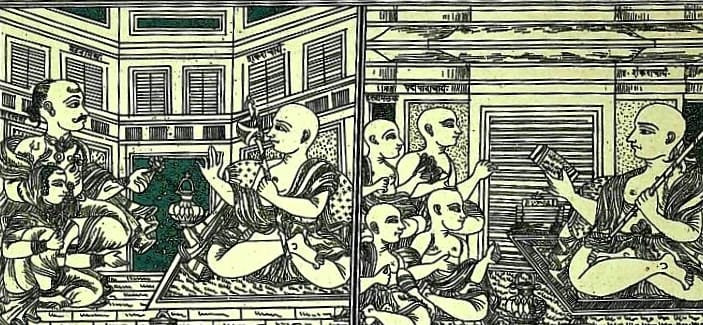
-
Madhaviya Sankara-digvijaya – 1

The Madhaviya Sankara-digvijaya is not included in the canonical works of Sri Vidyaranya. This book was published with Sri Vidyaranya’s name in the Anandashram edition, Series no.22, Poona, only in 1891.
The author of this recent work is decidedly not Vidyaranya for the following reasons :-
1. The epithet Navakalidasa (Canto I, 9 & 10), assumed by the author, is not found in any of Vidyaranya’s works.
2. Navakalidasa Madhava, author of Bhagavatacampu, and Navakalidasa Madhava, author of Sankaradigvijaya, have been identified as one and the same person by scholars.
3. Many verses have been quoted in this work from the biographies written by Vyasacala, Tirumala Dikshita and Rajacudamani Dikshita – all posterior to Vidyaranya.
4. References to Sankaracarya’s meeting Udayana, Dandin, Mayura, Abinavagupta and Sriharsha, (made in this work), is historically wrong.
5. Vidyaranya’s style is generally simple, and his verses are in Anushtup metre (Pancadasi- all 1571 verses and Anubhuti- prakasa — all 2809 verses) are only in Anushtup.
6. Style of Sankaradigvijaya is akin to that of Bhagavata Campu.
7. Sankaradigvijaya is not noted in any recognised list of Vidyaranya’s works.
8.Guruvamsa Kavya and Madhaviya Sankaravijaya, the two most authoritative texts of the Sringeri matha give different versions of incidents of the life of Sankaracarya.
9. During the Tatanka Pratishta case, the Court asked the two parties to furnish evidence in support of their claim. Only the Kanchi Matha (defendant) placed ancient works like Sivarahasyam, Anandagiriyam Markandeya Samhita etc. as evidence. The plaintiffs did not produce any Sankaravijaya including Madhaviya before the Court. Hence, few eminent scholars opine that this work could have been prepared and produced after 1844, by using the name of Sri Vidyaranya muni.
-
Sri Saradamba – Sivaganga Matha (A Short History of Sivaganga Mutt, 1914)

-
காசியுள் காஞ்சி..3
ஸ்ரீபஞ்சானன தர்க்கரத்ன பட்டாசார்யர்.. (மூன்றாம் பகுதி)
1935-ஆம் ஆண்டு ஸெப்டம்பர் மாதம், 23-ஆம் நாள் மாலையில் ஸ்ரீ மஹா ஸ்வாமிகள் கல்கத்தா மாநகரிலுள்ள வங்காள ப்ராம்மண ஸபைக்கு விஜயம் செய்தார்கள்.
வங்கம் ப்ராம்மண ஸமூஹத்தினர் மட்டுமல்லாது, ஹிந்துஸ்தானி, மஹாராஷ்ட்ர, ஆந்த்ர, குஜராத்தி, தமிழ் ப்ராம்மணர்களுமாக சுமார் ஆயிரம் பேர்கள் அங்கு கூடி ஸ்ரீஸ்வாமிகளுக்கு மிக விமர்சையான வரவேற்பை அளித்தனர்.
ஸபையின் தலைவரான பட்டாசார்யர், ஸ்ரீமஹாஸ்வாமிகளுக்கு, ஸம்ஸ்க்ருத மொழியில் அச்சிடப்பட்ட நீண்டதோர் வரவேற்பு இதழை, வாசித்தளித்தார். அவ்விதழின் சில பகுதிகளின் தமிழாக்கம் கீழே கொடுக்கப்பட்டுள்ளது:-
“ஸ்ரீமத் ஆதி சங்கர பகவத்பாதரின் பரம்பரையின் ஜோதியாக ஸ்ரீகாமகோடி பீடத்தை அலங்கரிக்கின்றவர்களும், பரமேச்வரனின் மனித உருவமோ என ப்ரமிக்கும்படி, துறவிகளின் அரசராகத் திகழ்ந்து வரும் தங்கள் வரவு நல்வரவாகுக!”
“நமது தர்மம் யாதென அறியாது, துன்பக்கடலில் சிக்குண்டு தவிக்கும் மக்களை, தங்களது நல் உபதேசங் களாலும், கருணை மிகுந்த அருளாலும் கைகொடுத்துக் கரை ஏற்றி, நல்வழியில் நடத்திச் செல்லும். தங்கள் விஜயம், இக் காசி மாநகரத்திற்கு, இப்போது கிடைத்துள்ளது, நாங்கள் செய்துள்ள புண்யத்தின் பயனன்றி வேறில்லை. சிவபிரான் போன்று எங்கள் முன் ப்ரகாசிக்கும் தங்கள் திருவடித் தாமரைகளை வணங்கி, சில வார்த்தைகளைச் செப்ப விரும்புகின்றோம்”.
“ஸ்ரீஆதிசங்கரரது காமகோடி பீடத்தின் 68-ஆவது ஆசார்யாளாகவும், ஜகத்குருவாகவும் திகழும் தாங்கள். கருணையுடன் இங்கு விஜயம் செய்து, இப்பகுதியைப் புனிதமாக்கியது எங்கள் பெரும் பாக்யம்.’
“மேலும் புண்ய தீர்த்தங்களில் நீராடல், க்ஷேத்ரங் களிலும், ஆலயங்களிலும் ஸேவிப்பது, பின்னர் வரக்கூடிய ஒரு காலத்தில்தான் பயனை அளிக்கும். ஆனால் மஹான் களைத் தரிசிப்பதனாலேயே ஒரு மனிதனின் பிறவி கடைத்தேறுகின்றது, என பாகவதம் உணர்த்துகின்றது.”
“இத்தகைய மேன்மைகளையுடைய தங்களை எப்படிப் போற்றுவதென தெரியவில்லை; எனது வாக்குத் தழுதழுக்கின்றது, சரீரம் ஆனந்த பரவசத்தால் மயிர்கூச்சலடைகின்றது, கண்கள் ஆனந்தக் கண்ணீர் சொரிகின்றன.
மிக்க மங்களகரமான இந்த நன்னாளில், ஸனாதனமான நமது தர்மத்தைப் பிரதிஷ்டை செய்வதில் தீவிரமாக முயற்சித்து வரும் ஆசார்யமூர்த்திகளான தங்களுக்கு, எங்களது தழுதழுத்த குரலில், ஜயகோஷத்துடன் நல்வரவு கூறுகின்றோம்”.
(ஸ்ரீ அ.குப்புஸ்வாமி ஐயர் உள்ளிட்டோரின் குறிப்புகளிலிருந்து தொகுத்து வழங்கப்படும் தொடரின் மூன்றாம் பகுதி நிறைவுற்றது.)
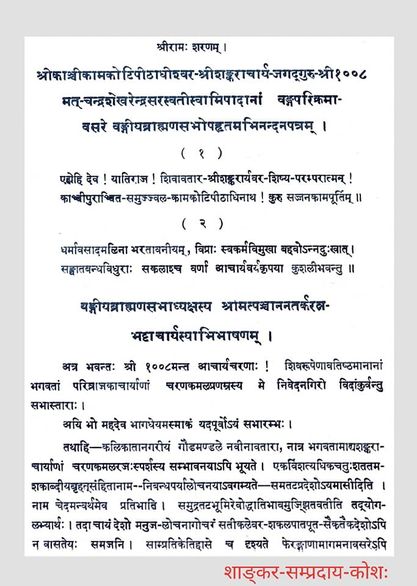
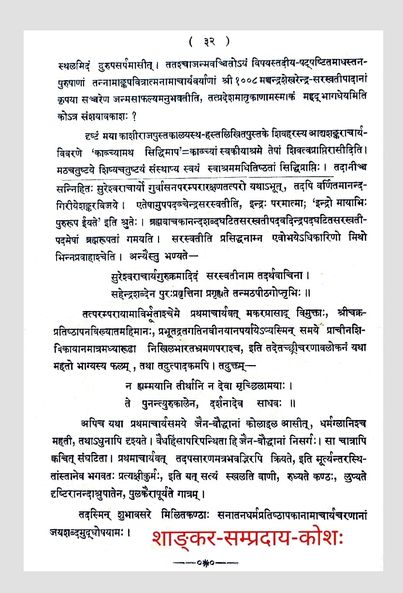
-
காசியுள் காஞ்சி..2
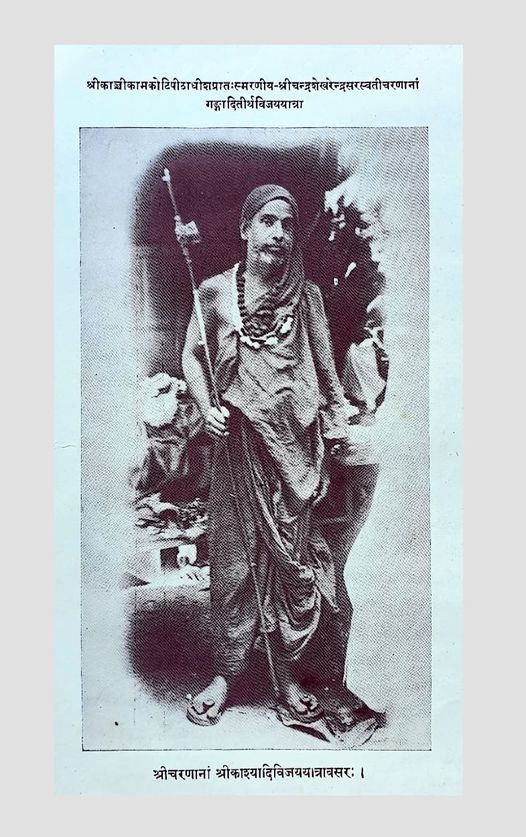
ஸ்ரீபஞ்சானன தர்க்கரத்ன பட்டாசார்யர்.. (இரண்டாம் பகுதி)
கல்கத்தா மாநகரில் ஸ்ரீ மஹா ஸ்வாமிகள் சுமார் 100 தினங்கள் தங்கியிருந்தார்கள். பல நாட்கள் அவர்கள் நகரின் பல பகுதிகளிலுள்ள பல நிறுவனங்களுக்கு விஜயம் செய்வார்கள்; பல தார்மீக விழாக்களுக்கும் செல்வார்கள்.
அப்போதெல்லாம் ஸ்ரீ ஆசார்யாளுடன், பட்டாசார்யரும், கல்கத்தா ஸர்வகலாசாலையில் பேராசிரியராக இருந்த அவரது குமாரர், ஸ்ரீஜீவன் நியாயதீர்த்தரும், ஸ்வாமிகளுடன் சென்று, அந்த உரையாற்றுவர். விழாக்களில் பங்கு கொண்டு. 1935-ஆம் ஆண்டு சாதுர்மாஸ்ய வ்ரதத்திற்கு ஸ்ரீ ஆசார்யாள், கல்கத்தாவின் காளிகாட் பகுதியில் தங்கியிருந்தார்கள்.
அப்போது ஒருநாள் மாலை. தம்மிருப்பிடத்திலிருந்து கடுமையான வெயிலில் பட்டாசார்யர் ஸ்ரீ ஸ்வாமிகள் முகாம் செய்திருந்த இடத்திற்கு வந்து சேர்ந்தார். அப்போதுதான் சிறிது இளைப்பாறிய ஸ்ரீஆசார்யாள், பட்டாசார்யர் வந்துள்ளதை அறிந்து, அவரை அழைத்துவரும்படி ஒரு தொண்டரை ஏவினர்.
சில நிமிடங்களில் அங்கு வந்த பட்டாசார்யர், ஸ்ரீ ஸ்வாமிகளுக்கு வந்தனம் செய்துவிட்டு நிற்க, ஸ்ரீ ஆசார்யாள் அவரை அமரச் சொன்னார். அவரும் அருகில் அமர்ந்தார். அவருக்கு சரீரம் சற்று ஸ்தூலமானது. ஸ்ரீ மஹா பெரியவர்கள் அவரை நோக்கி, “இவ்வளவு கடுமையான வெப்பத்தில் ஏன் வரவேண்டும்?” என (ஸம்ஸ்க்ருதத்தில்) கேட்க, பட்டாசார்யர், “இந்துசேகரனின் குளிர்ச்சியில் திவாகரனின் உஷ்ணம் என்ன செய்யும் ?”* என்று பதில் கூறினார். இப்படி அவர் கூறிய சில நிமிடங்களில் மழை தூர ஆரம்பித்தது; குளிர்ந்த காற்றும் வீசலாயிற்று. அப்போது பட்டாசார்யர் “நான் ஸ்துதிவாக்யமாகச் சொல்லவில்லை, சொன்னது உண்மை என இப்போது விளங்கிவிட்டது”, என்றார். இதனைக் கேட்ட ஸ்ரீ ஆசார்யாள் மெல்லச் சிரித்தார்கள். அன்று முதல் பட்டாசார்யருடைய தங்குமிடத்திற்குத் தினமும், மதியம், மடத்தின் குதிரை வண்டியை அனுப்பிவைக்கும்படி, கார்வாரிடம் ஸ்ரீ மஹா ஸ்வாமிகள் உத்திரவிட்டார்கள்.
கல்கத்தா மாநகரை விட்டுக் கிளம்பி, ரூப் நாராயண், தாமோதர் நதிகளைக் கடந்து, தென் வங்காளத்தின் வழியே ஸ்ரீ ஸ்வாமிகள் யாத்ரையை மேற்கொண்டபோது, தெற்கு வங்காளத்திலுள்ள, பாஞ்ச்கூடா, பாட்பாரா முதலிய க்ராமங்களில், ஒவ்வொன்றிலும் இரண்டு அல்லது மூன்று நாட்கள் தங்கியிருந்தார்கள். அந்த க்ராமங்களுக்கெல்லாம் பட்டாசார்யரும், அவரது குமாரர் ஸ்ரீஜீவனும், முன்னதாகவே சென்று, ஸ்ரீ ஸ்வாமிகள் தங்குவதற்கான ஏற்பாடுகளைச் செய்தும், உடனிருந்தும், கைங்கர்யம் செய்து வந்தனர். வங்க தேசத்தைச் சேர்ந்த மிகப்புகழ் வாய்ந்த ஒரு மாபெரும் அறிஞர் காஞ்சீ மடத்தின் ஸ்ரீ மஹா ஸ்வாமிகளிடம் அபரிமிதமான பக்தியும், மதிப்பும் கொண்டு தொண்டாற்றியது வியக்கத்தக்கது.
* இருவரிடையே ஸம்பாஷணை ஸம்ஸ்க்ருத மொழியில் நடந்தது. இந்து சேகரன் = சந்த்ரசேகரன் (காஞ்சீ ஸ்ரீ மஹா ஸ்வாமிகளின் பெயர்), திவாகரன் = ஸூர்யன்.
(ஸ்ரீ அ.குப்புஸ்வாமி ஐயர் உள்ளிட்டோரின் குறிப்புகளிலிருந்து தொகுத்து வழங்கப்படும் தொடரின் இரண்டாம் பகுதி நிறைவுற்றது.)
